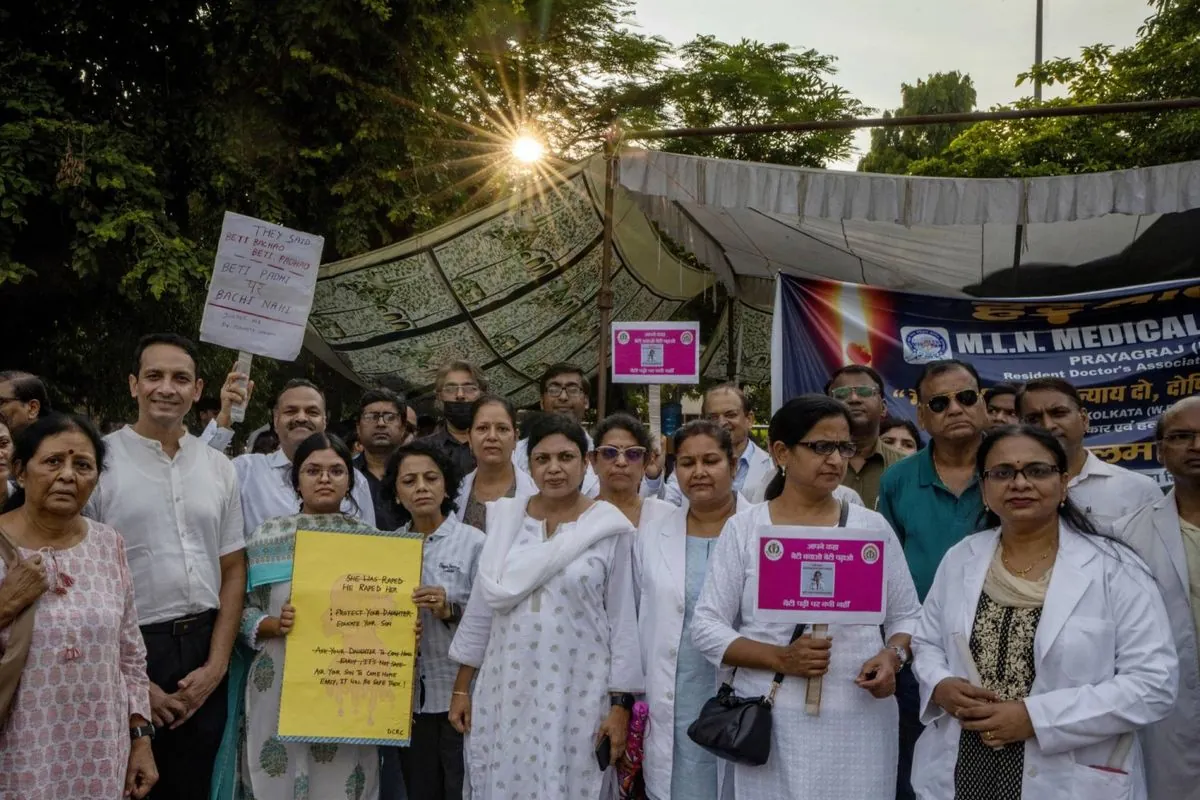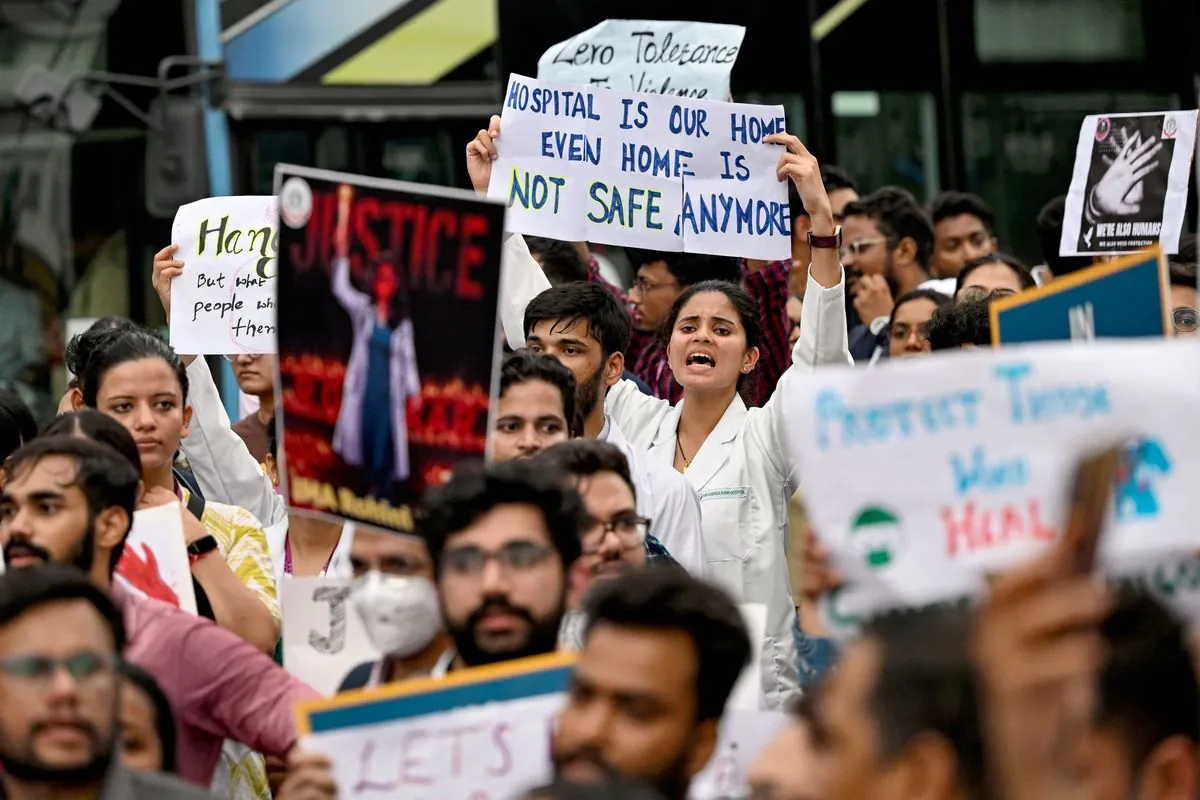India's Supreme Court Forms Task Force After Doctor's Murder Sparks Protests
India's Supreme Court establishes a hospital safety task force following nationwide protests over a trainee doctor's murder. Doctors continue demonstrations, demanding comprehensive reforms beyond the court's directives.

In response to nationwide protests following the tragic murder of a trainee doctor, India's Supreme Court has established a hospital safety task force. This decision comes amidst growing concerns over the safety of medical professionals, particularly women, in healthcare facilities across the country.
On August 9, 2024, a trainee doctor was brutally attacked in Kolkata, the capital of West Bengal. This incident sparked outrage and led to widespread demonstrations by medical professionals demanding justice and improved safety measures. The Supreme Court, established in 1950, took suo moto cognizance of the case, highlighting its significance.
Chief Justice D Y Chandrachud, heading a three-judge bench, emphasized the importance of workplace safety for women, stating, "If women cannot go to a place of work and be safe, then we are denying them the basic conditions of equality." This statement underscores the constitutional guarantee of equality and prohibition of gender-based discrimination in India.
The court-mandated task force, led by doctors, is tasked with recommending comprehensive reforms to enhance safety in medical establishments. Some suggested measures include separate resting rooms for female staff, improved lighting, CCTV coverage, and regular safety audits. The panel is required to submit an interim report within three weeks and a final report within two months.
However, many junior doctors remain unsatisfied with these directives, arguing that they fail to address the core issues plaguing India's healthcare system. India faces a significant shortage of medical professionals, with nearly 600,000 doctors needed to meet World Health Organization standards. Additionally, the country's healthcare spending is among the lowest globally as a percentage of GDP, ranking 145th out of 195 countries according to Lancet.

The Supreme Court has also ordered the deployment of the Central Reserve Police Force (CRPF), India's largest paramilitary force, to the hospital where the crime occurred. This measure aims to provide security for female doctors who expressed concerns about their safety following the incident and subsequent vandalism by unidentified individuals.
This case has reignited discussions about women's safety in India, reminiscent of the public outcry following the 2012 Delhi gang rape case. That incident led to significant legal reforms, including the enactment of the Protection of Children from Sexual Offences (POCSO) Act in the same year.
In a related incident, thousands of protesters in Maharashtra, India's second-most populous state, blocked railway tracks for hours, disrupting services on India's fourth-largest railway network. They were demonstrating against the alleged sexual abuse of two four-year-old girls by a school cleaner near Mumbai. The state's Chief Minister, Eknath Shinde, announced that the case would be tried in a fast-track court, a system introduced in 2000 to expedite legal proceedings.
As the nation grapples with these challenges, the medical community continues to advocate for systemic changes. The National Medical Commission, which replaced the Medical Council of India in 2020, faces the daunting task of addressing both the safety concerns and the broader issues of healthcare infrastructure and staffing in the country.
"Legislation alone will not solve these problems; we need a comprehensive overhaul of the system."
The Supreme Court has urged doctors participating in the protests to resume their duties, assuring them of efforts to ensure their safety and protection. However, as the task force begins its work, the medical community and the nation at large await concrete actions to address the multifaceted challenges facing India's healthcare system and women's safety.


































